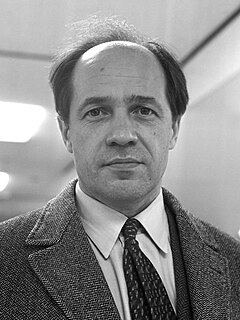 W
WAinsi parla Zarathoustra is incidental music composed by Pierre Boulez in October 1974 for the theatre Renaud-Barrault. Boulez scored the work for a solo voice and an instrumental ensemble. It was first performed at the Théâtre d'Orsay in Paris on 6 November 1974. Sketches and scores are kept by the Foundation Paul Sacher in Basel, while images and films of the production are in the Bibliothèque nationale de France.
 W
WCarl Nielsen's Aladdin, Opus 34/FS 89, is incidental music written to accompany a new production of Adam Oehlenschläger’s "dramatic fairy tale" presented at The Royal Theatre in Copenhagen in February 1919.
 W
WAlceste is a masque, semi-opera or incidental music by George Frideric Handel. It was the only complete theater project ever attempted by Handel, and he composed the music when he was nearly 65.
 W
WAntigone, Op. 55, MWV M 12, is a suite of incidental music written in 1841 by Felix Mendelssohn to accompany the tragedy Antigone by Sophocles, staged by Ludwig Tieck. The text is based on Johann Jakob Christian Donner's German translation of the text, with additional assistance from August Böckh.
 W
WGeorges Bizet composed L'Arlésienne as incidental music to Alphonse Daudet's play of the same name, usually translated as The Girl from Arles. It was first performed on 1 October 1872 at the Théâtre du Vaudeville in Paris. Bizet's music consists of 27 numbers for voice, chorus, and small orchestra, ranging from short solos to longer entr'actes. Bizet himself played the harmonium backstage at the premiere performance.
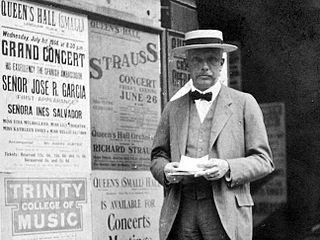 W
WLe bourgeois gentilhomme, Op. 60, is an orchestral suite compiled by Richard Strauss from music he wrote between 1911 and 1917.
 W
WLe Bourgeois gentilhomme is a five-act comédie-ballet – a play intermingled with music, dance and singing – written by Molière, first presented on 14 October 1670 before the court of Louis XIV at the Château of Chambord by Molière's troupe of actors. Subsequent public performances were given at the theatre of the Palais-Royal beginning on 23 November 1670. The music was composed by Jean-Baptiste Lully, the choreography was by Pierre Beauchamp, the sets were by Carlo Vigarani and the costumes were done by the chevalier d’Arvieux.
 W
WThe Cinq grimaces pour Le songe d'une nuit d'été is a set of incidental music pieces for orchestra by Erik Satie. Composed in 1915 for a planned circus-style staging of Shakespeare's play A Midsummer Night's Dream, it marked the composer's first collaboration with author Jean Cocteau. The production failed to materialize and Satie's music went unperformed in his lifetime. His score was published posthumously in 1929.
 W
WThe Divertimento for Chamber Orchestra after Keyboard Pieces by Couperin, Op. 86 is an orchestral suite composed by Richard Strauss published in 1942 which consists of eight movements, each one based on a selection of pieces from François Couperin's Pièces de Clavecin written for the solo harpsichord over the period 1713 to 1730.
 W
WEgmont, Op. 84 by Ludwig van Beethoven, is a set of incidental music pieces for the 1787 play of the same name by Johann Wolfgang von Goethe. It consists of an overture followed by a sequence of nine pieces for soprano, male narrator, and full symphony orchestra. The male narrator is optional; he is not used in the play and does not appear in all recordings of the complete incidental music.
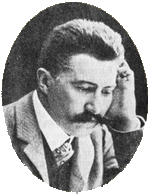 W
WPohádka, Op. 16 is an orchestral suite from incidental music composed for Julius Zeyer's mythological drama Radúz and Mahulena by Josef Suk in 1897–1898.
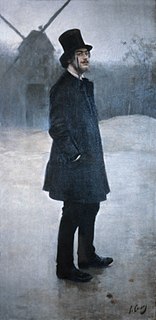 W
WLe Fils des étoiles is an incidental music score composed in December 1891 by Erik Satie to accompany a three-act poetic drama of the same name by Joséphin Péladan. It is a key work of Satie's "Rosicrucian" period (1891–1895) and played a role in his belated "discovery" by the French musical establishment in the 1910s.
 W
WThe Foresters or, Robin Hood and Maid Marian is a play written by Alfred Tennyson and first produced with success in New York in 1892. A set of incidental music in nine movements was composed for the play by Arthur Sullivan.
 W
WLe Martyre de saint Sébastien is a five-act musical mystery play on the subject of Saint Sebastian, with a text written in 1911 by the Italian author Gabriele D'Annunzio and incidental music by the French composer Claude Debussy (L.124).
 W
W"Music for a While" is a da capo aria for voice, harpsichord and bass viol by the English Baroque composer Henry Purcell.
 W
WPeer Gynt, Op. 23, is the incidental music to Henrik Ibsen's 1867 play of the same name, written by the Norwegian composer Edvard Grieg in 1875. It premiered along with the play on 24 February 1876 in Christiania.
 W
WPelléas et Mélisande, Op. 80 is a suite derived from incidental music by Gabriel Fauré for Maurice Maeterlinck's play of the same name. He was the first of four leading composers to write music inspired by Maeterlinck's drama. Debussy, Schoenberg and Sibelius followed in the first decade of the 20th century.
 W
WLe piège de Méduse is a short play of which Erik Satie wrote both the text and the incidental music.
 W
WThe Prélude de La Porte héroïque du ciel is an 1894 piano composition by Erik Satie, intended as a musical introduction to the play The Heroic Gate of Heaven by Jules Bois. It is considered one of the finest works of his "Rosicrucian" or "mystic" period. A typical performance lasts around 6 minutes. Satie was so fond of the piece he dedicated it to himself.
 W
WCarl Nielsen's Saga-Drøm, also known as Gunnar's Dream, is a tone poem for orchestra based on the Icelandic Njal's Saga. It was first performed at the Music Society (Musikforeningen) in Copenhagen on April 6, 1908 by Nielsen himself.
 W
WThe Shylock Suite, Op. 57 is a six-movement work by Gabriel Fauré, first performed in 1890. In addition to four purely orchestral movements it includes two serenades for solo tenor with orchestral accompaniment. The composer constructed the suite from incidental music he had written the previous year for Edmond Haraucourt's play Shylock, an adaptation of Shakespeare's The Merchant of Venice, presented at the Théâtre de l'Odéon in Paris. The theatre music had been written for a small orchestra, and Fauré greatly expanded the orchestration for the concert suite.
 W
WSicilienne, Op. 78, is a short work by Gabriel Fauré, composed in 1893. It was originally an orchestral piece, written for a theatrical production that was abandoned. In 1898 Fauré arranged the unperformed music as a work for cello and piano, and in the same year incorporated it into his incidental music for Maurice Maeterlinck's play, Pelléas et Mélisande, in an orchestration for theatre orchestra. It took its final form as part of a suite arranged for full orchestra by Fauré, published in 1909.
 W
WThe Starlight Express is a children's play by Violet Pearn, based on the imaginative novel A Prisoner in Fairyland by Algernon Blackwood, with songs and incidental music written by the English composer Sir Edward Elgar in 1915.
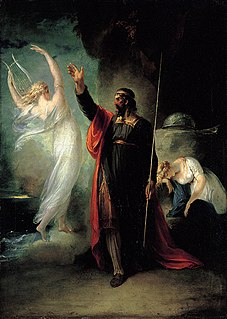 W
WThe Tempest incidental music, Op. 1, is a set of movements for Shakespeare's play composed by Arthur Sullivan in 1861 and expanded in 1862. This was Sullivan's first major composition, and its success quickly brought him to the attention of the musical establishment in England.
 W
WThamos, King of Egypt is a play by Tobias Philipp, baron von Gebler, for which, between 1773 and 1780, Wolfgang Amadeus Mozart wrote incidental music, K. 345/336a, of an operatic character.
 W
WToad of Toad Hall is a play written by A. A. Milne – the first of several dramatisations of Kenneth Grahame's 1908 novel The Wind in the Willows – with incidental music by Harold Fraser-Simson. It was originally produced by William Armstrong at the Playhouse Theatre, Liverpool, on 21 December 1929. It was given in the West End the following year, and has been revived frequently by many theatrical companies.
 W
WThe Turandot Suite, Op. 41 is an orchestral work by Ferruccio Busoni written in 1904-5, based on Count Carlo Gozzi's play Turandot. The music – in one form or another – occupied Busoni at various times between the years 1904–17. Busoni arranged the suite from incidental music which he was composing to accompany a production of Gozzi's play. The suite was first performed on 21 October 1905, while the play with his incidental music was not produced until 1911. In August 1916 Busoni had finished composing the one-act opera Arlecchino, but it needed a companion work to provide a full evening's entertainment. He suddenly decided to transform the Turandot music into a two-act opera with spoken dialog. The two works were premiered together as a double-bill in May 1917.
 W
WFelix Mendelssohn's "Wedding March" in C major, written in 1842, is one of the best known of the pieces from his suite of incidental music to Shakespeare's play A Midsummer Night's Dream. It is one of the most frequently used wedding marches, generally being played on a church pipe organ.